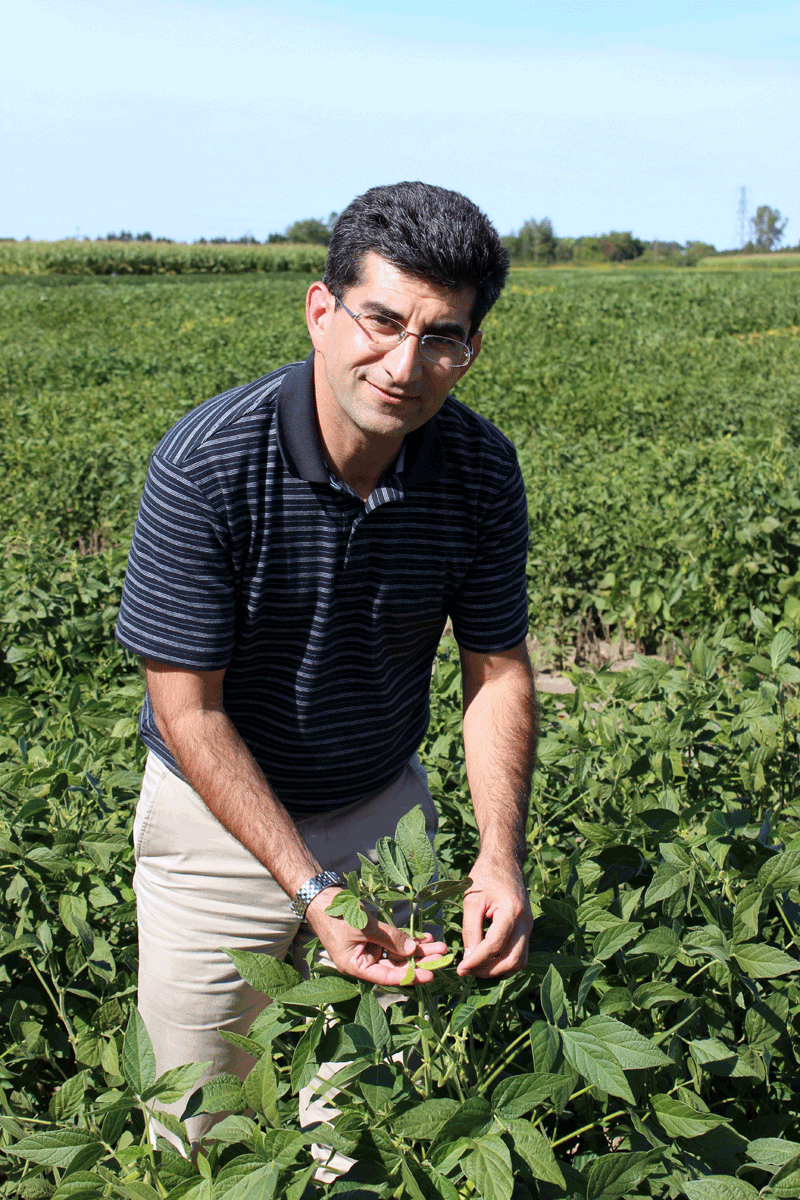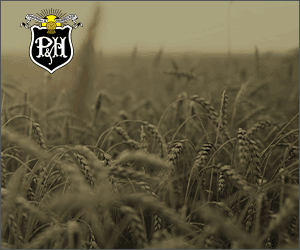Research roundup
FIND OUT WHAT’S NEW IN THE WORLD OF RESEARCH
In this special edition of Research Roundup, we profile one of the researchers of the University of Guelph, Ridgetown Campus.
Spotlight on Research
Rachel Telford
MILAD ESKANDARI, PH.D., is an Assistant Professor, Soybean Breeding & Genetics, with the Department of Plant Agriculture at the University of Guelph Ridgetown Campus. He has been involved in soybean breeding research ever since he attended the University of Guelph in 2007 for his Ph.D. His interest in plant breeding led him to Guelph and the lab of Dr. Istvan Rajcan due to its strong and interesting research programs. At the time, the lab itself was the appeal, not the specific crop. However, Eskandari is now happy that he works on soybeans because he sees it as one of the major field crops across the world, including Canada, because it has a variety of important uses for both food and industrial applications.

In order to develop new superior soybeans adapted to Ontario, Eskandari and his colleagues at Ridgetown make more than 100 different bi-parental crosses annually among their elite soybeans and new soybean genotypes. The crosses have been designed to establish breeding populations that are segregating for important agronomic and seed quality traits, including seed yield, protein, oil, and soybean cyst nematode (SCN) resistance.
Eskandari works on increasing the genetic potential of seed yield, protein, and oil contents of soybeans through the accumulation and/or rearrangement of favourable genes. He uses both phenotypic and genotypic selections in developing new soybean cultivars. Breeding materials are evaluated for their performances in the fields at different locations in different years to select for the best lines with the highest stability across the different environments in southwestern Ontario.
To speed up the selection process, marker assisted selection (MAS) is used for those traits that have reliable genetic markers (for example, SCN). Researchers have recently developed several molecular markers for yield, protein, and oil, which can be used in MAS in the Ridgetown program.
The traits of interest being developed by the soybean breeding program fall into two categories: always important traits and market-driven traits.
The Ridgetown program has been one of the “key providers” of new soybean cultivars to soybean producers in Ontario by providing high yielding and high protein food-grade soybeans. Increasing the yield and protein content of seeds in new soybean food quality cultivars are always a very important aspect of the program and Eskandari and his colleagues continuously work on improving them to the benefit of Ontario farmers and the Ontario soybean industry.
Developing soybeans with resistance to damaging pests in Ontario, such as SCN and phytophthora root rot, are also important to maintaining profitable soybean production in Ontario. The program has made very good progress in the past few years in developing soybean cultivars with SCN trait and now most of the soybeans they develop offer SCN resistance.
However, researchers are becoming too dependent on one specific source of SCN resistance, and this creates the risk of SCN populations overcoming this resistance. In a currently established project, Eskandari is trying to accumulate new SCN genes in soybeans and hopes that the breeding of these new resistance genes into high yielding soybean varieties will help preserve resistance before the nematodes adapt.
In respect to market-driven traits, in collaboration with Ontario soybean producers and exporters, researchers at Ridgetown try to gather as much information as possible about market opportunities for Ontario soybeans in order to establish their breeding priorities. As an example, due to increasing demand for soybean-derived food products with high isoflavones, they have already started to elevate isoflavones content in their superior food-grade soybeans.
Current technology also allows soybean oil to be converted into materials that can be used in different industrial sectors such as automotive, furniture, cosmetic, and plastic products. In the Ridgetown program, important progress has been made in breeding soybeans with modified fatty acids which can be used for industrial applications. By developing high-yielding, high-oil soybeans with increased oleic and/or linoleic acid contents, Eskandari hopes to improve soybean oil content and create varieties that are more suitable for industrial uses. •








